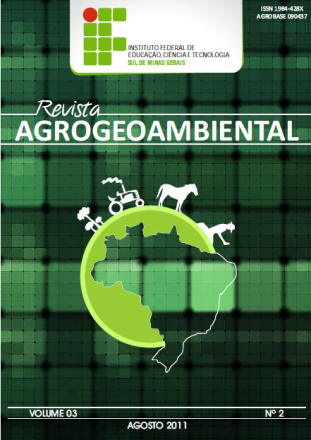Morphoanatomical characterization of Brassavola tuberculata Hook´s (Orchidaceae) leaf and root upon the rocky outcrop
Revista Agrogeoambiental
Morphoanatomical characterization of Brassavola tuberculata Hook´s (Orchidaceae) leaf and root upon the rocky outcrop
Autor Correspondente: F. M. T. da Silva | [email protected]
Palavras-chave: plant anatomy, ecological anatomy, leaf anatomy, root anatomy, orchid.
Resumos Cadastrados
Resumo Português:
As orquídeas possuem adaptações morfológicas e anatômicas que as tornam aptas a ocuparem os mais diferentes ambientes com as mais variadas condições. Essas adaptações, com os atributos fisiológicos, são essenciais para o estabelecimento, crescimento, reprodução e colonização das orquídeas. Sendo assim, este estudo foi desenvolvido com o objetivo de descrever a anatomia foliar e radicular de Brassavola tuberculata Hook encontrada em forófito situado em afloramento rochoso em Campestre (MG). As amostras de folhas e raízes coletadas foram cortadas a mão livre e coradas com azul de astra e safranina. Os testes histoquímicos aplicados foram: sudan III para lipídeos e lugol para amido. As folhas são subuladas, suculentas e sulcadas, contendo uma cânula longitudinal contínua. A epiderme possui cutícula espessa, estômatos com câmara supraestomática em ambas as faces foliares e o mesofilo é homogêneo com parênquima aquífero na porção central. Na raiz, o velame e o tecido cortical são compostos por várias camadas de células que permitem o armazenamento de água. Foram observados grãos de amido na folha e na raiz. Esses caracteres xeromórficos encontrados permitem a sobrevivência da espécie nas condições restritas encontradas no forófito sobre afloramento rochoso.
Resumo Inglês:
Orchids have morphological and anatomical adaptations that make them able to occupy the most different environments with the most varied conditions. These adaptations, together with the physiological attributes are essential for the establishment, growth, reproduction, and colonization of orchids. Therefore, this study was developed to describe the leaf and root anatomy of Brassavola tuberculata Hook found in a phorophyte located on a rocky outcrop in Campestre, southern Minas Gerais. The collected leaf and root samples were freehand cut and stained with astra blue and safranin. The histochemical tests applied wer: sudan III for lipids and lugol for starch. The leaves are subulate, succulent and grooved containing a continuous longitudinal cannula. The epidermis has a thick cuticle, stomata with a suprastomatal chamber on both leaf faces and the mesophyll is homogeneous with aquifer parenchyma in the central portion. In the root, the velamen and cortical tissue are composed of several cell layers that allow it to store water. There were starch grains in the leaf and root. These xeromorphic characters found allow to the species to survive in the restricted conditions found in the phorophyte on rocky outcrops.

